Dear readers, my walk around Tokyo’s Yamanote Line starts at Shibuya, the world’s second busiest railway station (around 2.80 million passengers daily). Shibuya is served by a total of nine railway and subway lines operated by four different companies. Coming from my home in the Yokohama suburbs, it’s the first Yamanote station I reach. That’s why I chose it as my starting point. I’m going to walk along the rail loop in a counterclockwise direction. We are going to take it very slowly.
Until 15 years ago, I used to come to Shibuya every day, Monday through Friday. A lot has changed since then, and I can barely recognize the place. At first glance, the area around the station looks like a scene from H. G. Wells’s The War of the Worlds, with red-and-white striped Martian machines patrolling a devastated landscape. Fortunately, they are just some of the cranes that perpetually dot Tokyo’s skyline.
For the last few years, Shibuya has been a massive construction site. The building over the station, which housed a Tokyu department store, is temporarily gone.
The moyai statue – a stone face resembling those in Easter Island – that used to compete with Hachiko in popularity as a meeting point, now sits all alone, nearly forgotten amid the chaos.
This side of the station has been closed. Few people come this way since it's not as practical as before. Nobody meets his friends here, and the double-faced statue understandably looks sad very sad.
Tokyo is changing everywhere in many subtle and major ways, but nothing compares to what is happening in Shibuya. Now the statue of Hachiko, the loyal dog, is literally surrounded by new high-rises, the visually striking symbol of Shibuya’s once-in-a-century urban redevelopment.
Across what used to be the bus terminal is the new Tokyu Plaza, just been rebuilt a few years ago. Personally, I don't find it as interesting as before. Gone are some of my favorite eateries, like Rogosky, the Russian restaurant where for less than 1,000 yen one could have borscht, piroshki and tea with jam in a nice old-fashioned glass.
While climbing the overpass stairs near the station's South Exit, I cross path with one of the ubiquitous groups of foreign tourists led by a flag-wielding guide.
Gone is the old rusty overpass. The new one is wider, looks more like a square. Sadly gone are also all the shops and diners that used to be lining up along the far side of National Route 246 (Ni-Yon-Roku in Japanese), including one of my favorite ramen places, Asuka, a Taiwanese joint whose most popular dish was the terrifying, artery-clogging paiku tantanmen - noodles topped with a slab of tonkatsu (thick deep-fried pork cutlet) half submerged in a fiery spicy broth.
At noon, this place attracted a seemingly endless stream of grizzled salarymen who invariably ordered that dish, probably to show off their macho attitude and asbestos-lined stomachs. I only chose it once in a while because it was so heavy that it would put me “out of service” for the rest of the day.
When, in 2018, I decided to pay a visit to Asuka for good times sake, I found with horror that it was gone, replaced by a huge hole.
It took me some time to understand what was in front of my eyes.
It was a vast, dull building site with holes and cracks, great heaps of earth and stone, mobile cranes and rubble and ruins.
I wonder if Asuka has relocated somewhere. I wonder how much money the owner was given by the developers.
Next, I’m heading south to the next station, Ebisu.

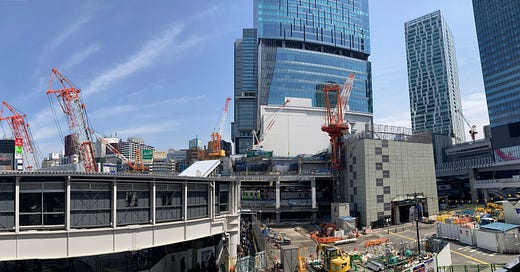



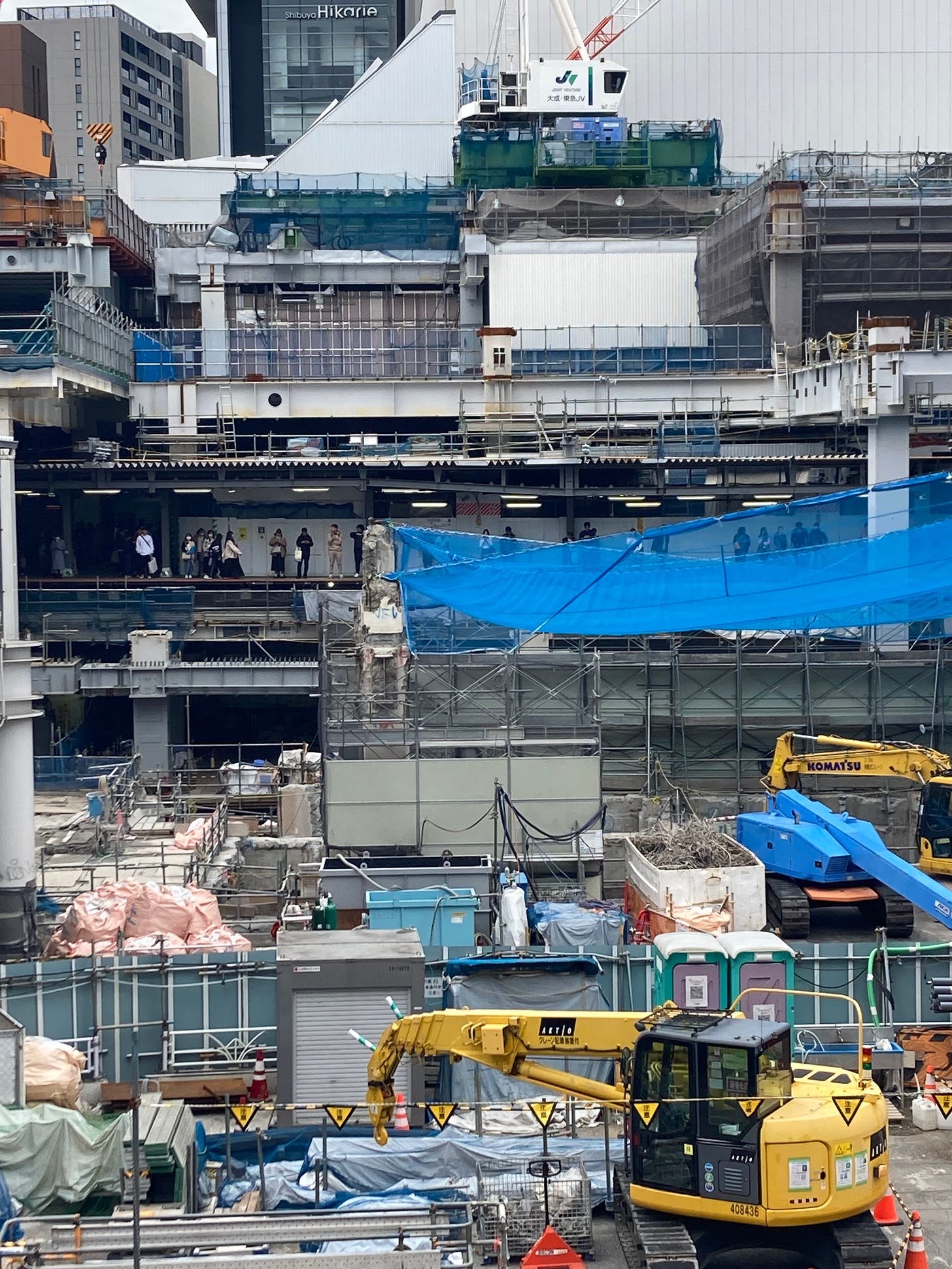

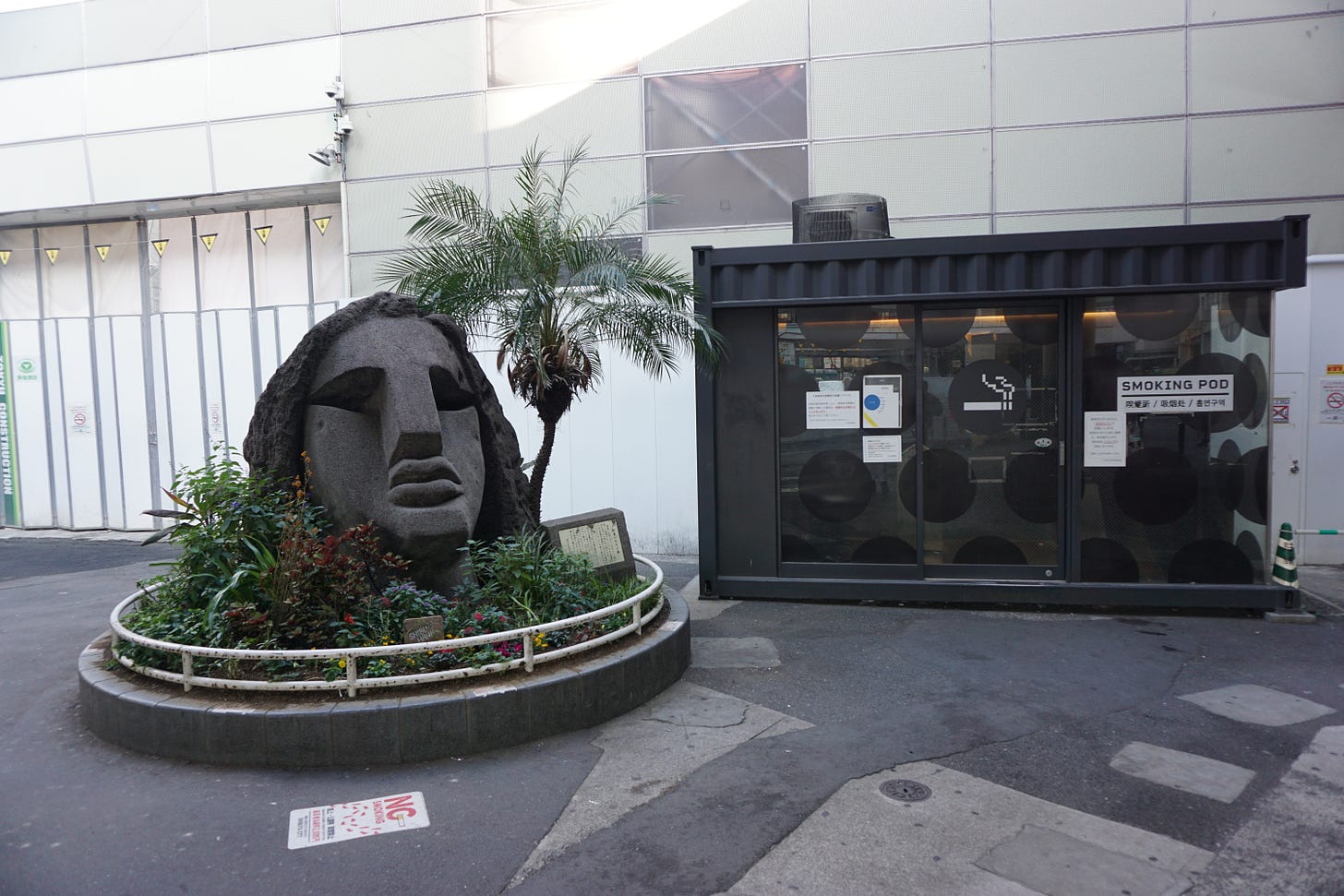
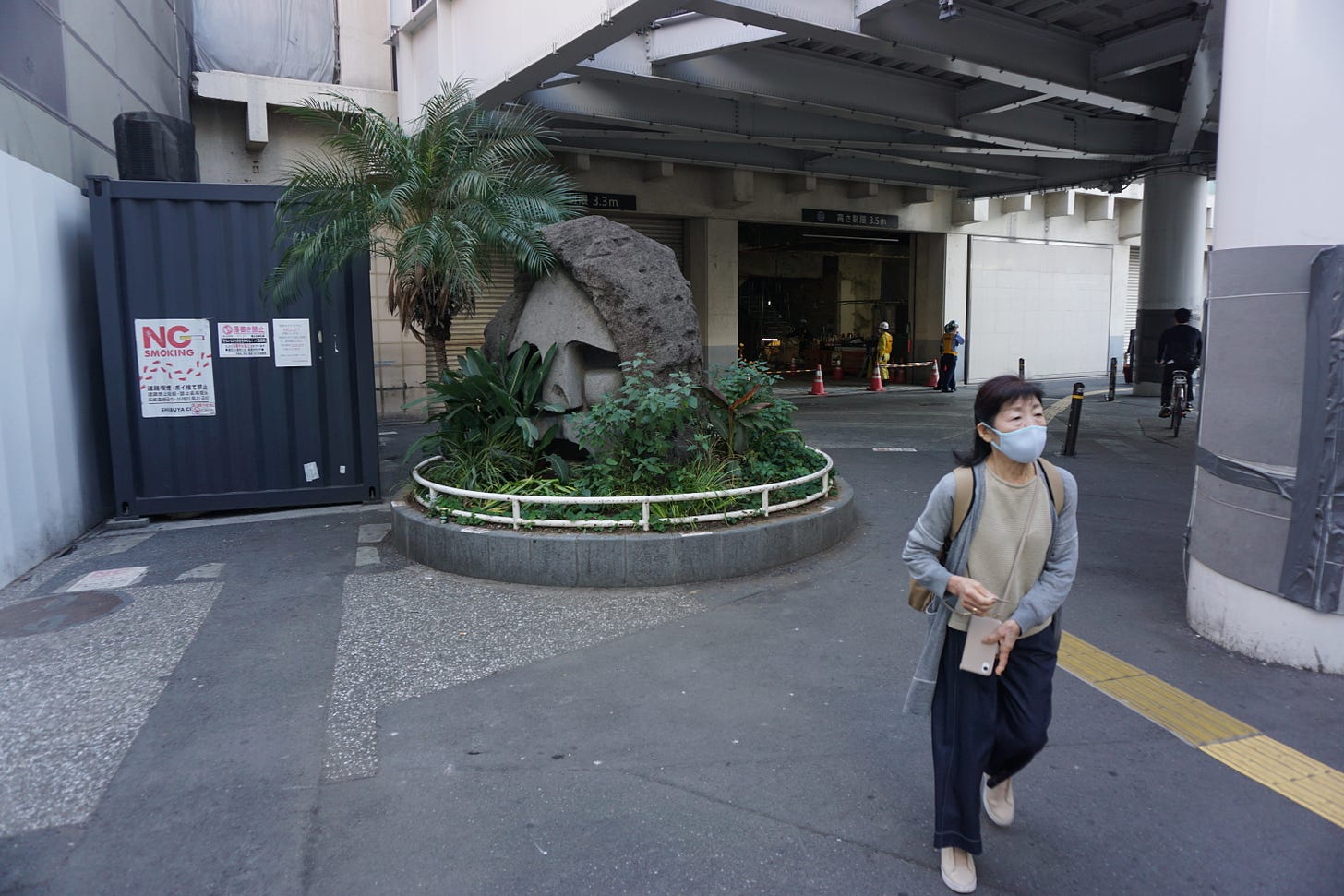
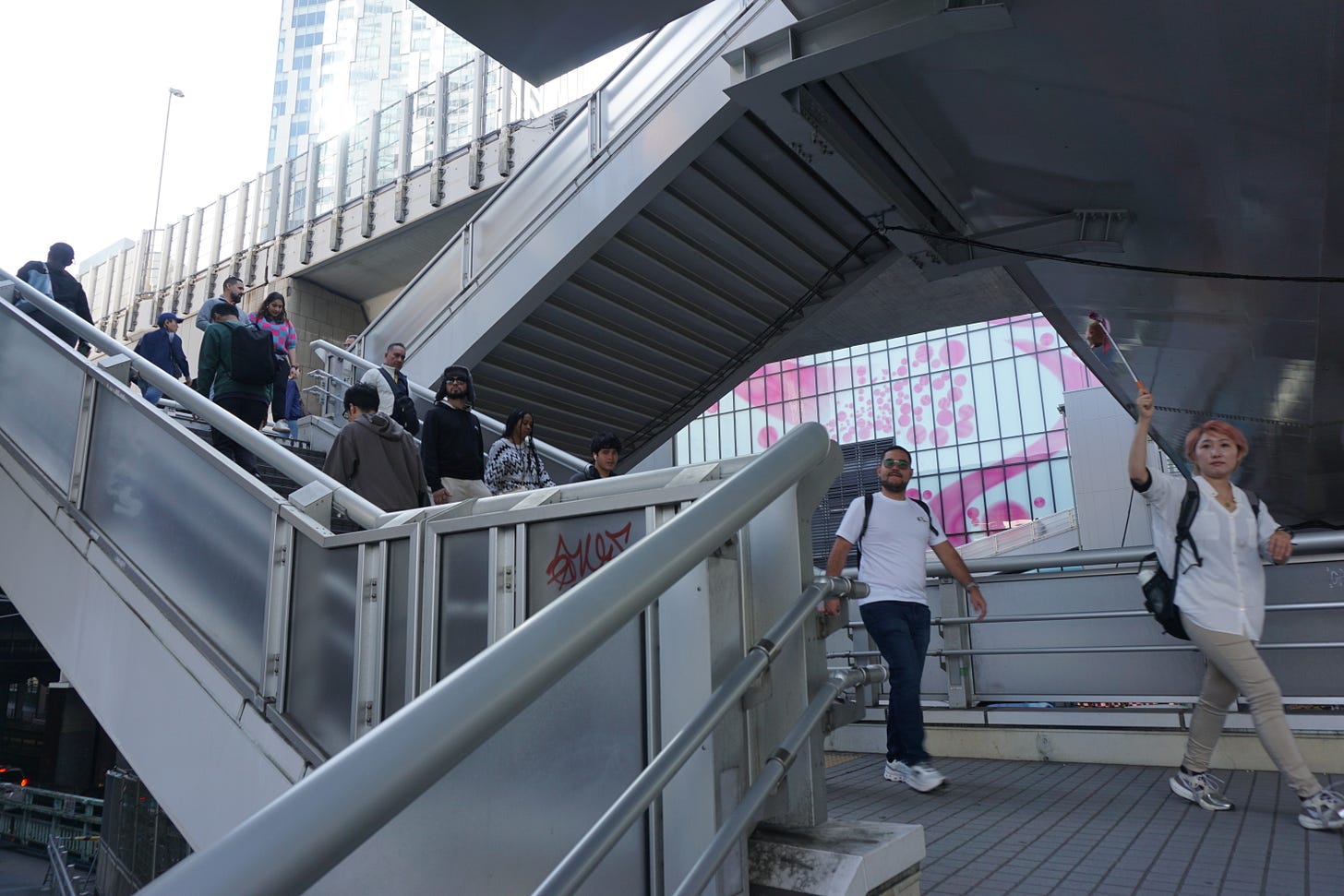
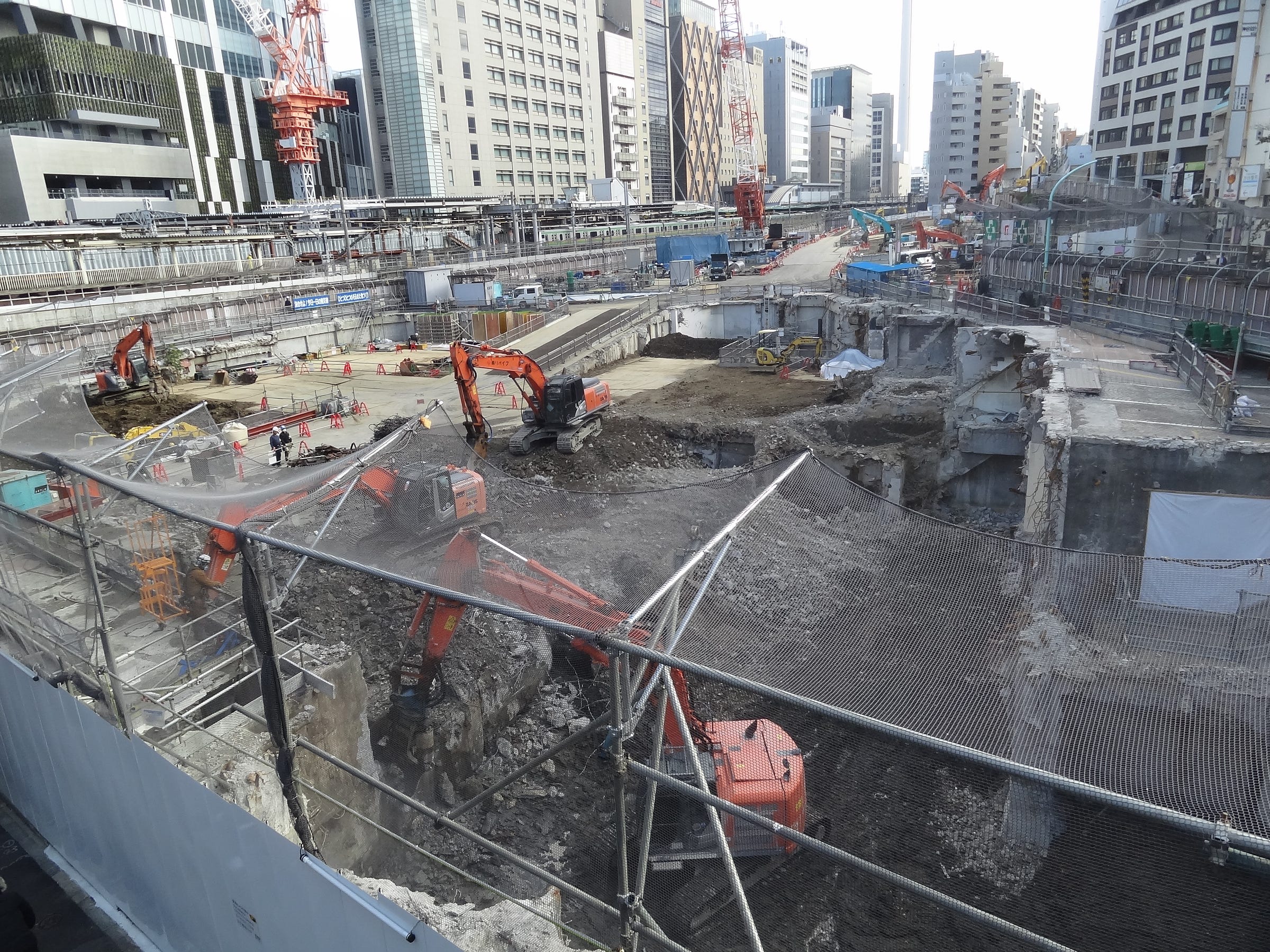
Wow! Some massive construction projects, for sure. Sorry to learn that some of your favorite places are gone.
There are days, when only a hearty paiku tantanmen will do. I hope you'll find new places in which to enjoy good, genuine, robust cooking, Gianni-san!